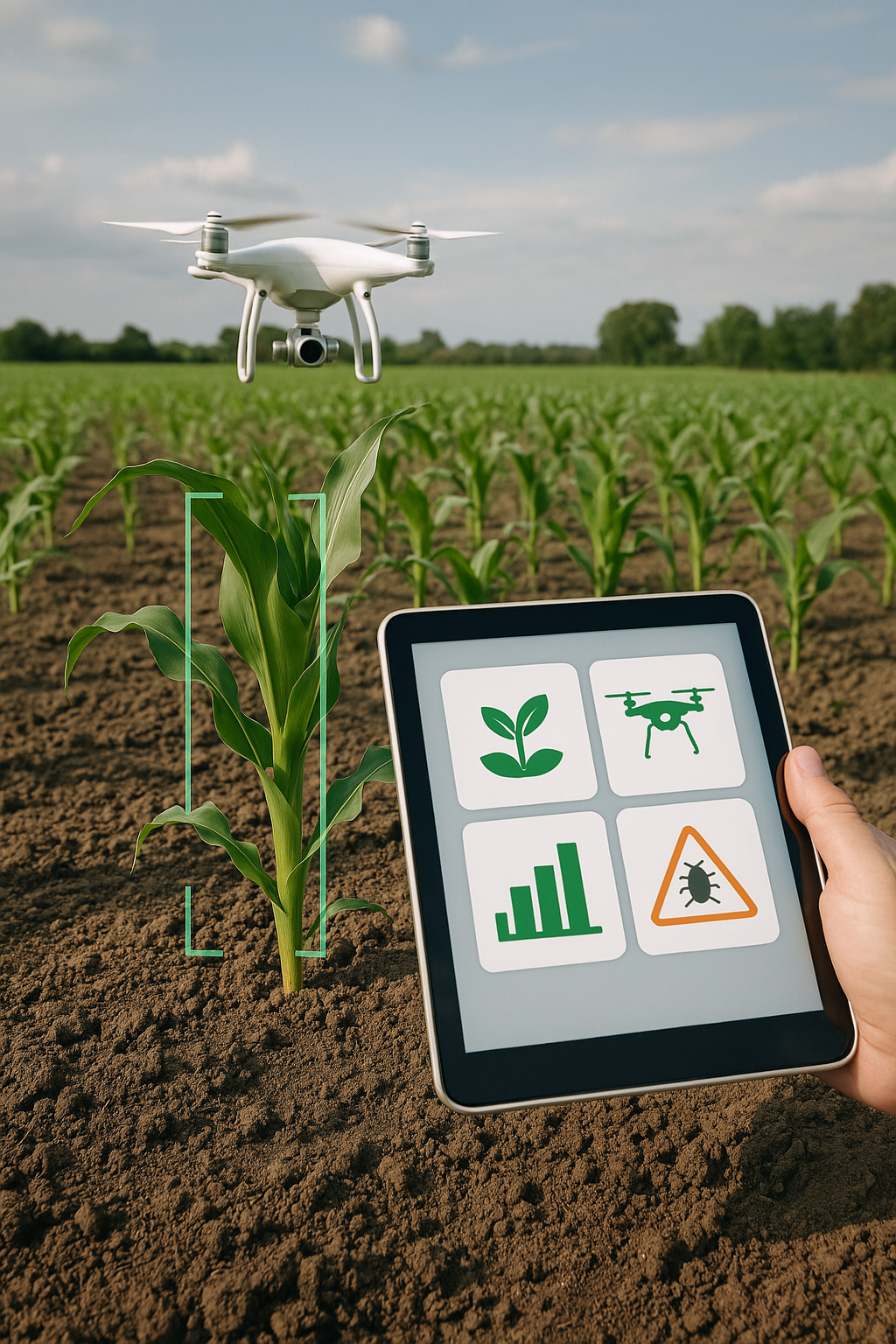Computer vision and GenAI drive next-gen farming innovation
The integration of computer vision into agriculture is driving a shift from labor-intensive manual monitoring to intelligent, automated decision-making. CV technologies, particularly those leveraging deep learning architectures such as convolutional neural networks (CNNs), transformer models, and the You Only Look Once (YOLO) family, are enabling precise identification of crops, weeds, pests, and fruit ripeness.

New research demonstartes the power of combining computer vision with generative models to address key inefficiencies in smart farming. Published in Applied Sciences, the study emphasizes how these AI-driven tools are not just modernizing traditional agricultural practices but are also creating new pathways for sustainable, scalable food production.
The peer-reviewed study titled “Computer Vision Meets Generative Models in Agriculture: Technological Advances, Challenges and Opportunities” delivers a comprehensive review of the synergy between computer vision (CV) and generative artificial intelligence (GenAI) in smart agriculture. The analysis assesses both the technological maturity of these AI tools and the practical obstacles that hinder their widespread adoption across farming ecosystems.
How are AI tools transforming agricultural processes?
The integration of computer vision into agriculture is driving a shift from labor-intensive manual monitoring to intelligent, automated decision-making. CV technologies, particularly those leveraging deep learning architectures such as convolutional neural networks (CNNs), transformer models, and the You Only Look Once (YOLO) family, are enabling precise identification of crops, weeds, pests, and fruit ripeness. These tools have become indispensable for optimizing crop yields, improving harvesting accuracy, and minimizing human error.
In precision farming, CV applications are assisting with real-time field analysis, offering granular insights into plant health, soil quality, and irrigation requirements. Similarly, livestock management has benefited from the use of image recognition systems for behavior tracking, disease detection, and weight monitoring. The study notes that such automation enables early intervention, lowers operating costs, and enhances productivity at scale.
However, the full potential of these technologies is often constrained by a lack of labeled training data. Agricultural images are inherently diverse, influenced by changing weather conditions, lighting, and geographical factors. Here, the role of generative models becomes crucial, allowing developers to overcome data limitations without compromising model accuracy.
What role do generative models play in advancing smart farming?
GenAI, particularly models like generative adversarial networks (GANs) and diffusion models, are playing an important role in enriching agricultural datasets. These models can synthetically generate high-quality images that closely mimic real-world agricultural environments. This approach mitigates the challenges of data scarcity, a persistent bottleneck in the deployment of high-performance AI in farming scenarios.
The review highlights how generative models improve the generalization ability of classification and detection algorithms. In low-resource contexts, where curated image datasets are minimal or hard to acquire, GenAI helps fill the gap by producing diverse examples for training, thereby increasing model robustness across different crop types, seasons, and regions.
Moreover, the study discusses the emerging application of hybrid systems, where CV and GenAI techniques are combined to enhance performance across various agricultural tasks. These systems are particularly effective in pest detection, fruit maturity classification, and field management, where environmental variability can affect model reliability. By simulating a wide range of field scenarios, generative models strengthen the adaptability and accuracy of CV-based systems, paving the way for scalable smart farming solutions.
What barriers remain for AI deployment in real-world agriculture?
Despite the promising results of AI's integration in agriculture, the study acknowledges several pressing challenges that continue to obstruct full-scale deployment. Chief among these is the issue of environmental variability, which complicates the generalization of AI models trained in controlled conditions. Lighting changes, occlusions from foliage, and inconsistent field topologies reduce the reliability of CV systems unless they are trained on expansive and diverse datasets.
Another critical limitation is the feasibility of deploying these AI models on edge devices in rural and remote areas. Most agricultural regions lack the computational infrastructure required for real-time inferencing using large deep learning models. Edge deployment constraints, such as limited processing power and energy supply, restrict the application of advanced models outside experimental or high-tech farm environments.
Interpretability remains an additional concern. While computer vision systems can deliver high classification accuracy, their decision-making process often remains opaque. For farmers and agricultural technicians, understanding why an AI model reached a certain conclusion—such as diagnosing a disease or recommending a harvest time—is essential for building trust in the technology. The review urges the development of explainable AI frameworks tailored to agriculture to enhance transparency and foster adoption.
The research also notes the absence of unified datasets and benchmarking standards in the agricultural AI community. Without common evaluation protocols, comparing model performance across different regions or tasks becomes challenging. This lack of standardization hampers the creation of universally applicable solutions and slows down the development of transferable AI systems for global agriculture.
Toward scalable, explainable and inclusive agricultural AI
The study identifies several emerging trends that could shape the next generation of AI-powered agriculture. Vision–language models, capable of integrating textual and visual data, are poised to make farm management systems more intuitive and interactive. These models could potentially allow farmers to interact with AI tools using natural language queries combined with visual references, thereby lowering the barrier to entry.
Another promising avenue is federated learning, which allows decentralized model training across multiple devices or farms without sharing sensitive data. This technique addresses both privacy concerns and data sovereignty issues, especially important in regions where data governance policies are strict or ill-defined.
While the study highlights the potential of AI-driven innovations in agriculture, it also cautions that achieving scalable, adaptive, and trustworthy AI systems requires collaborative efforts among AI researchers, agricultural scientists, policymakers, and technology providers. Investment in infrastructure, open data initiatives, and explainability tools will be essential for turning experimental success into industry-standard practice.
- FIRST PUBLISHED IN:
- Devdiscourse










